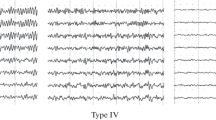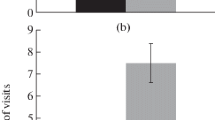Abstract
Effects of trichloroethylene (TRI) on the central nervous system (CNS) and autonomic functions were examined by means of continuous polygraphic measurements of electroencephalogram (EEG), electromyogram (EMG) and electrocardiogram (ECG) in electrode-implanted and freely moving rats, while they were exposed via inhalation to TRI vapor of 300, 1000 or 3000 ppm for 8 h/day or 6000 ppm for 4 h/day on 3 consecutive days. The exposures to 3000 and 6000 ppm produced abnormal EEG activity and incapacitation of postural maintenance during the exposure period, while the post-exposure period was characterized by decreased waking (W) time, lowered heart rate (HR) and increased numbers of bradyarrhythmic episodes after recovery from anesthesia. The exposure to 1000 ppm decreased W time without the appearance of anesthesia. The exposure to 300 ppm did not produce any observable effects except the lowered HR, which occurred during the post-exposure period. The relationships between internal doses of TRI and its metabolites and these TRI-induced pathophysiological responses were determined by blood and brain analyses of TRI, trichloroethanol and trichloroacetic acid in the TRI-exposed rats. Recordings of respiratory chest wall movement revealed that the number of TRI-induced bradyarrhythmias accompanying apnea during paradoxical sleep (PS) increased significantly after cessation of exposure to 6000 ppm TRI. This suggests that TRI-induced hypoxemia due to apnea during PS triggers bradyarrhythmogenesis through increased cardiac vagal efferent tone.
Similar content being viewed by others
References
Alford N, Fletcher FC, Nickeson D (1986) Acute oxygen in patients with sleep apnea and COPD. Chest 89: 30–38
Arito H, Tsuruta H, Oguri M (1988) Changes in sleep and wakefulness following single and repeated exposures to toluene vapor in rats. Arch Toxicol 62: 76–80
Arito H, Uchiyama I, Arakawa H, Yokoyama E (1990) Ozone-induced bradycardia and arrhythmia and their relation to sleep-wakefulness in rats. Toxicol Lett 52: 169–178
Bachman DS (1972) A technique for vagal stimulation in chronic experiments. J Appl Physiol 33: 402–403
Bachman DS (1973) Prolonged apnea, vagal overactivity, and sudden infant death. Pediatrics 51: 755–756
Bardodej JZ, Vyskocil J (1955) The problem of trichloroethylene in occupational medicine. AMA Arch Indust Health 13: 581–592
Brodsky M, Wu D, Denes P, Kanakis C, Rosen KM (1977) Arrhythmias documented by 24 hour continuous electrocardiographic monitoring in 50 male medical students without apparent heart disease. Am J Cardiol 39: 390–395
Flowers NC, Horan LG (1972) Nonanoxic aerosol arrhythmias. JAMA 219: 33–37
Guilleminault C, Cummiskey J, Motta J (1980) Chronic obstructive airflow disease and sleep studies. Am Rev Respir Dis 122: 397–406
Guilleminault C, Connolly SJ, Winkle RA (1983) Cardiac arrhythmia and conduction disturbances during sleep in 400 patients with sleep apnea syndrome. Am J Cardiol 52: 490–494
James WRL (1963) Fatal addiction to trichloroethylene. J Indust Med 20: 47–49
Kawakami T, Takano T, Araki R (1988) Synergistic interaction of triand tetra-chloroethylene, hypoxia, and ethanol on the atrioventricular conduction of the perfused rat heart. Indust Health 26: 25–33
Kleinfeld M, Tabershaw IR (1954) Trichloroethylene toxicity. Arch Ind Hyg Occup Med 10: 134–141
Konietzko H, Elster I (1973) Toxic effects on heart of trichloroethylene. Arch Toxicol 31: 93–98
Kryger M, Quesney LF, Holder D, Gloor P, MacLeod P (1974) The sleep deprivation syndrome of obese patients. A problem of periodic nocturnal upper airway obstruction. Am J Med 56: 531–539
Mikiskova H, Mikiska A (1966) Trichloroethanol in trichloroethylene poisoning. Br J Indust Med 23: 116–125
Miller WP (1982) Cardiac arrhythmias and conduction disturbances in the sleep apnea syndrome. Am J Med 73: 317–321
Moore TO, Eisner R, Lin YC, Lally DA, Hong SK (1973) Effects of alveolar PO2 and PCO2 on apneic bradycardia in man. J Appl Physiol 34: 795–798
Nakajima T, Okino T, Kurasawa K, Murayama N, Sato A (1987) Chemical burns, bradycardia, extrasystolic arrhythmia, and unconsciousness caused by accidental trichloroethylene exposure (in Japanese). Jpn J Ind Health 29: 72–73
Nakamura K (1985) Mortality patterns among cleaning workers. Jpn J Ind Health 27: 24–37
Nomiyama K (1978) Three clinical cases of trichloroethylene-exposed workers with the central nervous system impairment (in Japanese). Jpn J Ind Health 20: 526
Okuma T, Shimazono Y, Narabayashi H (1957) Cortical and subcortical electrograms in anesthesia and anoxia in man. Electroencephalogr Clin Neurophysiol 9: 609–622
Otsuka K, Sato T, Saito H, Kaba H, Otsuka K, Seto K, Ogura H, Ozawa T (1985) Circadian rhythm of cardiac bradyarrhythmia episodes in rats. Chronobiologia 12: 11–28
Otsuka K, Ikari M, Ichimaru Y, Saito H, Kawakami T, Otsuka K, Kaba H, Seto K (1986) Experimental study on the relationship between cardiac arrhythmias and sleep states by ambulatory ECG-EEG monitoring. Clin Cardiol 9: 305–313
Reihardt CF, Mullin LS, Maxifield ME (1973) Epinephrine-induced cardiac arrhythmia potential of some common industrial solvents. J Occup Med 15: 953–955
Seppäläinen AM, Antti-Poika M (1983) Time course of electrophysiological findings for patients with solvent poisoning. Scand J Work Environ Health 9: 15–24
Stoohs R, Guilleminault C (1992) Cardiovascular changes associated with obstructive sleep apnea syndrome. J Appl Physiol 72: 583–589
Taylor GJ, Harris WS (1970) Cardiac toxicity of aerosol propellants. JAMA 214: 81–85
Tilkian AG, Guillenault C, Schroeder JS, Lehrman KL, Simmons FB, Dement WC (1977) Sleep-induced apnea syndrome. Am J Med 63: 348–358
Vernon RJ, Ferguson RK (1969) Effects of trichloroethylene on visualmotor performance. Arch Environ Health 18: 894–900
Waters EM, Gerstner HB, Huff JE (1977) Trichloroethylene. I. An overview. J Toxicol Environ Health 2: 671–707
White JF, Carlson GP (1979) Influence of alterations in drug metabolism and epinephrine-induced cardiac arrhythmias in animals exposed to trichloroethylene. Toxicol Appl Pharmacol 47: 515–527
Winer BJ (1971) Statistical principles in experimental design, 2nd edn. McGraw-Hill, New York
Zwillich C, Devlin T, White D, Douglas N, Weil J, Martin R (1982) Bradycardia during sleep apnea. J Clin Invest 69: 1286–1292
Author information
Authors and Affiliations
Rights and permissions
About this article
Cite this article
Arito, H., Takahashi, M., Sotoyama, M. et al. Electroencephalographic and autonomic responses to trichloroethylene inhalation in freely moving rats. Arch Toxicol 67, 193–199 (1993). https://doi.org/10.1007/BF01973307
Received:
Accepted:
Issue Date:
DOI: https://doi.org/10.1007/BF01973307




